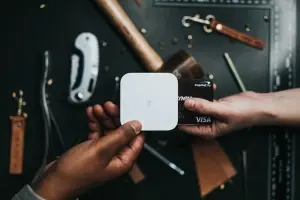Get access to exclusive updates, the latest news and the inside scoop 🍨

Shopify Ecommerce Conversion Rate Optimisation
If you’re already a Shopify store owner, take a look at our ecommerce conversion rate optimisation tips.
Don't want to read the whole article? 😏Click here for chapters
- Ecommerce Conversion Rate Optimisation Tips for Shopify 🔥
- What Is Conversion Rate Optimisation?
- Calculating A Conversion Rate
- What’s A Good Conversion Rate?
- A/B Testing
- N0.1: Homepage
- N0.2: Product Discovery
- N0.3: Product Pages
- N0.4: Checkout Experience
- N0.5: Shipping & Returns
- N0.6: Additional Information
- N0.7: Website Speed & Performance

Written by Madeleine
Ecommerce Conversion Rate Optimisation Tips for Shopify 🔥
If you’re already a Shopify store owner, we guess that you’re beginning to understand the importance and functionality of ecommerce conversion rate optimisation when it comes to the growth of your business.
Are you looking for some conversion marketing tips that you can put into practice? If the answer is yes, we’re happy to say that you’ve come to the right corner of the web, as today’s guide is going to allow you to step back and take a look at your business and decipher whether its foundations have been designed with the customer in mind.
However, before we tackle the heavy questions, we should probably answer the one question that many of you will be asking:
What Is Conversion Rate Optimisation?
Conversion rate optimisation is a technique that is used to increase the percentage of website traffic who choose to purchase. In business, this is commonly referred to as ‘conversion’.
If you’re new to the concept of conversion, it’s a pretty big deal as this represents that great moment when a casual visitor finally takes the plunge and purchases a product from a store.
Additionally, conversions can refer to the smaller actions that lead up to that big moment too. For example, conversion on the homepage might result in a visitor clicking through to a product page.
On the product page, a conversion might refer to a customer clicking ‘Add to Cart’. So, as you’ve probably guessed, conversions are entirely dependent on the purpose that a specific part of a website serves.
By implementing conversion marketing into the heart of your business, a brand will sufficiently increase its opportunity to boost website traffic and generate more sales.
When it comes to ecommerce conversion rate optimisation, there will be new opportunities for your business to make the path of the customer’s purchasing journey shorter, easier and more enjoyable.
Through rigorous experimentation and analysis, brands will be able to fine-tune their website to push people closer to making a purchase. This process is called conversion rate optimisation (CRO).
Typically, website conversions for ecommerce brands include; online sales, visitors adding products to their cart or wishlist and email signups, but you should know that your choices are not limited to these examples as merchants on Shopify can track and optimise any key performance indicators (KPIs) or metrics that are specific to their business.
Conversion marketing is a very broad subject as it can impact many different aspects of a website alongside a brand’s digital marketing channels too. So, to increase conversions for an online store, businesses will need to constantly test every aspect of their Shopify site.
Calculating A Conversion Rate
An essential aspect of maintaining a viable conversion rate optimisation process is by ensuring that you are tracking conversion rates across all channels. To do this, you’ll need to know how to calculate CRO. Here’s what a common conversion rate formula looks like:
Conversion Rate Formula: The total number of conversions, divided by the number of visitors, multiplied by 100.
Calculating A Conversion Rate (Example)
Let’s say that your store had 50 sales and 1,000 visitors last month. To calculate the right conversion rate for your business, you would divide 50 by 1,000 (.50) and multiply this by 100, which equals 5%.
What’s A Good Conversion Rate?
According to the latest surveys and studies conducted, the average conversion rate for ecommerce websites on the net is 2.86%.
As a new store owner, we think that a prosperous goal to aim for would be somewhere between 1% and 2% and the following ecommerce conversion rate optimisation strategies will enable you to improve this rate over time:
A/B Testing
There are a few different ways for merchants to implement ecommerce conversion rate optimisation into their business and this guide will focus on one that we know works well. It’s a form of experimentation called A/B testing (also commonly known as split testing).
With A/B testing, two different versions of a page are shown to two similar sets of visitors at the same time. Eventually, the version that performs more effectively and produces a larger amount of conversions is declared the winner. Sounds simple enough right?
However, before you can conduct an A/B test, you’ll first need to figure out if your website is receiving enough traffic to generate sufficient results.
Why? Well if your sample size is too small, you won’t be able to learn anything from your results since they won’t possibly be able to accurately reflect how a larger population would use your site. So, if you’re looking to calculate how a large population would use your site, you’ll need to conduct an A/B test.
Finding A Single Page Conversion Rate
To find the current conversion rate for a single web page on your site, you’ll first need to make sure that you have Google Analytics set up for your online store. With Google Analytics, you’ll be able to figure out the conversion rate for specific parts of your website, including the web pages that you’ll be testing.
This method will give you a glimpse of your current conversion rate and should not be used for measuring the outcome of your tests. In Layman’s terms, we would advise that this data should only be used for measuring whether or not you have enough traffic to perform a successful A/B test.
The quickest way to find the current conversion rate for specific pages of your website is by using the ‘Landing Pages’ report within Google Analytics.
To get there, head to the ‘Behavior’ section and then click ‘Site Content’. Then from the dropdown menu, click on ‘Landing Pages’. While doing this, we’d suggest ensuring that the timeframe you’re looking at is the same amount of time that your test will be running. Then, select the webpage you’d like to test from the list of landing pages and that’s it - job done.
To find the conversion rate for a specific goal that occurs on one page, you’ll need to add a secondary dimension to your report. Click ‘Add Secondary Dimension’ and type “Second Page”. The second-page dimension will then reveal which pages visitors navigate to next and what percentage of visitors went to this page after visiting the first page of your test.
For instance, let’s say that you’re interested in testing how many people navigate to the products page of your website from the homepage. To find the current conversion rate for this action, simply select the homepage as the initial page and then look for the products page under the ‘Second Page’ section of the report. The small grey percentage that’s listed within the ‘Sessions’ section will be your conversion rate for the action.
Creating CRO Experiments
If your site has enough traffic to perform a successful A/B test, you can start experimenting on your online store.
To run an A/B test on your business website, you’ll need to use a tool such as; Optimizely, Convert, or Adobe Target and set up goals for your online store using Google Analytics.
Once inside Google Analytics, goals are a great way of measuring how a website guides its visitors towards completing a specific task or objective.
Goals can be anything from completing a product purchase to signing up for a newsletter subscription or completing simple navigation instructions.
By setting up goals for your test, you’ll be able to track and analyse the data behind the decisions that your customers are making as they move through your store.
There are five different types of conversion goals in Google Analytics and these are known as; destination, duration, pages per session, event and smart goals. For CRO, we believe that destination goals and event goals are the ones to focus on.
So, to get you started with the bigger picture, here are some CRO strategies to test out in your store:
N0.1: Homepage
Think of your homepage as the front window of your store. It should capture the attention and ignite curiosity in the audience it reaches. Here at Karmoon, we believe that every homepage should feel inviting while embracing an easy approach to navigation.
Additionally, a homepage should be visually appealing and consistent toward achieving a single goal and the goal is to encourage your brand’s audience to take a further look into your store so that they can locate the products they want to purchase with ease.
Simplified User Experience
When it comes to designing an effective homepage, simplicity is key, as it only takes 50 milliseconds for a customer to form their first impression of a website and the business at hand, so merchants will need to do everything possible to make those moments count.
We would avoid overwhelming potential customers with excessive images and text. Instead, try to stay on-brand with a simple, visually appealing design.
If you’re not quite sure what to feature as your main hero, it’s usually best to go with either your bestselling or most profitable products, or collections such as new arrivals or current promotions. This is especially true as a whopping 86% of website visitors want to see information about products on the homepage of a website.
Coupon Codes & Real-Time Purchases
As soon as customers hit the homepage, merchants will have the opportunity to start building excitement and driving them toward their products. If the goal is to drive more traffic towards the products at hand, there are a bunch of great apps for Shopify store owners that can help drum up demand and incentivise product purchasing.
Let’s take a look at some of these applications below:
Applications such as 20+ Promotional Sales Tools will allow businesses to share; sales, coupon codes, promotions and more with their customers as soon as they arrive on site. These apps add a non-intrusive floating bar to the top of a homepage that will instantly grab the customers’ attention and push them exactly to where you need them to be.
Pop-ups and pop-unders are fantastic for building a brand’s email list. Try using an app like Privy or Popup to add a quick pop-up to your store’s homepage by offering a coupon code in exchange for a newsletter sign-up.
Apps such as Fomo Social Proof add a small notification to the bottom corner of a store, showcasing real-time purchases being made by other customers. These apps incite a sense of urgency while providing customers social proof that other people are out there buying products at that moment.
Trustworthy Testimonials
Has your brand been featured in major publications? Are your products used by any high-profile influencers? Add; testimonials, reviews and badges to your homepage beneath your main content to build trust and project credibility with your audience.
After all, it is thought that 88% of consumers trust online reviews as much as they trust recommendations from their friends and families.
N0.2: Product Discovery
Once customers are on your homepage, they will need to be able to find the products they’re looking for whilst discovering new products that they might be interested in.
Your customers need to be able to navigate your website through a well-thought-out search function, smart category design and engaging ways to discover products.
Utilise Intelligent Search
If your customers are looking for a product on your ecommerce website, chances are that they might not know exactly where to find it.
If your store has a large number of products, you may want to consider featuring your search bar prominently on the brand’s homepage, allowing customers to head directly to where they’d like to be rather than digging through categories.
With apps like Smart Search & Instant Search, merchants can power up their search bar with predictive results that help customers find what they’re looking for. Intelligent search bars suggests results and products as users are typing while taking into account things like spelling errors and alternate product names.
Category Organisation
Navigating a website should be easy and simple for your customers. So, we’d suggest avoiding the separation of products into too many categories. As an alternative, opt for four to six broad categories that contain more specific subcategories as a dropdown.
Then, it’s time to order these categories into the navigation bar based on their popularity, with the most popular category at the front of course.
404 Pages
Ask yourself this - are your website’s 404 pages a dead-end for viewers? Instead of leaving customers hanging when they hit a 404 page, try to guide them to other parts of your website that might be more useful.
To do this, we’d suggest customising your 404 pages to feature links to the most popular; collections, products and promotions that can be found within your online store.
Shoppable Instagram Feeds
Needless to say, Instagram is an extremely useful and powerful tool for brands to utilise when it comes to product discovery, which is why we couldn’t recommend embedding a shoppable Instagram feed onto your Shopify store anymore.
Shoppable Instagram feeds present merchants with a fantastic opportunity to inspire members of their audience with gorgeous photos, showing off the available products in everyday scenarios.
Many businesses have also found that shoppable Instagram feeds are well-suited for displaying user-generated content and as we’re sure you will all know that user-generated content has started to play a huge role in consumer purchasing behaviour.
Research currently indicates that user-generated content results in a 29% higher conversion rate for the ecommerce stores that make use of this strategy compared to those that do not.
For those of you here that currently own a Shopify store, you’ll be super happy to know that a shoppable Instagram feed can be embedded into your store using an app such as Instafeed.
Note:With an embeddable Instagram feed, merchants can promote their top products and link out directly to product pages, giving audience members a visually engaging way to find new products.
N0.3: Product Pages
Every product page needs to be built around clear communication that demonstrates the value of your brand’s products. To do this, immersive experiences that cover every aspect of the products at hand will be required while removing any opportunity for doubt or frustration.
If you require some guidance, on how this can be achieved, feel free to drop us an email and tell us a little bit about your project. We’re sure we can help!
High-Quality Product Photography
Now, we’re sure that you won’t need us to tell you this, but high-quality product photos are the most important part of an effective product page. Data from Justuno shows that 93% of consumers consider visual appearance to be the key deciding factor in a purchasing decision.
Try to incorporate images that show your products from every angle and accurately represent their look and feel. Additionally, we’d recommend including a video that shows your product in action too.
For instance, if you’re selling t-shirts, why not provide your customers with a better idea of what your shirts look like in motion by adding a video of a model wearing the item on the product page?
Website’s such as ASOS often put this clever selling strategy into practice, as it is thought that younger consumers are around 85% more likely to make a purchase after watching a product video.
Price, Delivery & Out-Of-Stock Items
Take a word of advice from the experts, the worst thing you can do is mislead your customers. According to the latest shopping cart abandonment statistics, 69.6% of online shopping carts are left behind.
What’s the reason why? Well, extra costs are simply too high but don’t be afraid to let your audience know the extent of; pricing, delivery times and inventory. If you do an effective job of selling your products and communicating their value, your customers won’t mind paying a little extra for shipping or waiting a little longer for delivery.
For the Shopify store owners reading this guide, we’d suggest making use of the Back In Stock app to give your customers the option of whether they’d like to be notified when out-of-stock products are added to the store.
Showcase Product Reviews
Product reviews are a fantastic way for merchants to ease the doubts of hesitant shoppers by providing them with the social proof that they need to click ‘Add to Cart’. Around 66% of customers have claimed that their purchasing decisions are influenced by reading online product reviews.
Well, we know this to be true, as positive product reviews can make all the difference in convincing shoppers that a product works and is worth purchasing. Reviews also help consumers make informed decisions in regards to product sizing and colour.
Shopify store owners can use apps such as Product Reviews and Yotpo to embed customer reviews directly onto their product pages.
Note:If your brand resides within the beauty and skincare industry, product reviews can be especially helpful for businesses when it comes to conversion marketing.
Utilise Heatmaps
Heatmaps are a popular CRO tactic for ecommerce brands as they take large amounts of behavioural data and turn it into a simple visual representation.
Essentially, a heatmap shows spots of engagement on a website, normally displayed in warm and cool shades. If an area on the heatmap is a warm shade (such as; red, orange or yellow) there’s a high level of activity there, whereas cooler shades (such as blue or grey) indicate a low level of activity.
The role of the heatmap is to show merchants what elements of their website visitors engage with most. In short, it reveals what parts of a store people; click, scroll and move through the most. Scroll heatmaps also show how far down people go before leaving a page.
Heatmaps are a great way to see your store through the eyes of your customers. You can learn what’s working and what isn’t, evaluate new ideas and improve elements of your site to increase conversions.
Applications such as Lucky Orange allow merchants to study engagement patterns from dynamic elements like; pop-ups, drop-down menus and forms, too!
N0.4: Checkout Experience
The checkout experience is one of the last steps in every customer’s purchasing journey, so it needs to be as frictionless and flawless as possible. At this stage in the process, your customers will display clear intent in purchasing.
So, as a business, you’ll need to make that purchase happen as quickly and conveniently as possible without any stress or confusion added into the mix.
Pre-Filled Customer Information
Did you know that you can make it even easier for your current customers to make repeat purchases by prefilling their shipping and billing information with customer accounts? The fewer details that customers are required to enter, the better.
One study from Google reports indicated that customers fill out forms 30% faster with autofill, which can result in an increased conversion rate at the checkout.
To set this up within your Shopify admin, head to ‘Settings’ and then click ‘Checkout’. Next, under ‘Customer Accounts’, select ‘Accounts are optional’. With optional accounts, your customers will still be able to check out as guests, but it also provides them with the chance to save their information for next time after filling out their details.
Additionally, Shopify merchants can also install Shop Pay, Shopify’s checkout solution for merchants. Shop Pay remembers and encrypts customers details so they can safely speed through checkout in one tap.
Abandoned Cart Emails
It is unfortunate, but sometimes customers will fill up their shopping cart with products and then leave the store with no intention of returning. However, abandoned cart emails do well in playing their part to remind customers of the items that they’ve already expressed an interest in.
Want to know how to get set up? Abandoned cart emails can be set up in the ‘Settings’ section of your Shopify admin. Then, head to the ‘Checkout’ and scroll down to the ‘Abandoned Cart’ section. Here, merchants will be able to choose whether they’d like to send abandoned cart emails either; 1, 6, 10, or 24 hours after a customer has abandoned their cart.
Confirmation Emails
In the same ‘Notifications’ section of the Shopify admin, store owners can also customise their order confirmation emails. After a customer has placed an order, there’s still an opportunity to put them back into the purchasing funnel by optimising an order confirmation email to encourage them to sign up for the company newsletter as well.
In the email, we would recommend linking customers to blog content as well as offering exclusive discounts and promotions for future orders as a token of appreciation.
N0.5: Shipping & Returns
Even after a customer has gone through the checkout process, merchants need to remember that the purchase isn’t over until the product is safely delivered to the customer’s hands.
How a business handles shipping and returns is another opportunity for merchants to delight their customers and turn one-time shoppers into lifelong customers. We all know that waiting for a package is an anxiety-inducing experience, but receiving a product that you’re dissatisfied with is even worse.
So, at this point, businesses should be doing everything in their power to make shipping and returns enjoyable for the customer.
Offer Free P&P
Expensive shipping costs can be a huge pain point for consumers as this has the potential to hold them back from making a purchase with a business. If this is something that you believe your business may be struggling with, try implementing free shipping into your conversion marketing strategy to encourage your audience to place an order, regardless of their location.
Free shipping can have a major impact on sales conversions, with around 73% of consumers reporting that free shipping deliberately influences their decision to make a purchase when buying online.
Refund Policy
It’s no surprise that some customers are hesitant about making purchases online. When it comes to ordering items such as clothing, it can be difficult to know exactly how a piece will fit in person.
According to UPS, 68% of shoppers will double-check what a website’s return and exchange policy are before making a purchase.
We guess that this is one of the main reasons why many brands now advertise free, easy, and no-hassle returns/ exchanges for their customers in the hope that this will increase conversion rates online.
Want our advice? To help relieve your customer’s concerns, make sure that your business has a clear refund policy so they know exactly what they can do if they aren’t satisfied with an order. Merchants can use Shopify’s refund policy generator to do it.
N0.6: Additional Information
Even though optimising elements such as the; homepage, product discovery features and product pages are crucial for pushing customers through the conversion funnel, merchants on the platform will also need to ensure that their website contains additional information such as the necessary ‘Contact’ and ‘About’ section.
About Page
The About page of a website should be so much more than a summary of your store. It should tell a story to your audience reach about the products that your business offers, alongside its mission.
Try to build a story around your products and your customers’ relationship with what you sell. For instance, ask yourself questions like - where did my idea come from? What makes my ideas special? What does an average day in my customer’s life look like?
By answering these questions, you will have a much-improved chance of conveying the right type of message to your customers and that’s bound to leave a lasting impression.
Contact Page
Should your customers wish to get in touch, they should be able to do so easily. According to a web usability report conducted by KoMarketing, it was found that around 44% of survey respondents would leave a website if there isn’t contact information or a phone number available - yikes!
This is a considerable figure by any means, but it’s understandable why consumers would question the validity and reliability of a business website when this information is not provided.
See, the Contact page should include how your customers can reach out if something goes wrong. If you consider this factor, it’s no wonder that the risk of making a purchase would be too big to take.
If you’re thinking about updating your Contact page, here’s what it should include:
An email address or contact form.
The brand’s physical location, along with a map and directions.
Retail store hours.
Links to your brand’s social media profiles.
Support-specific contact options, including a phone number or email address.
N0.7: Website Speed & Performance
The performance of a Shopify store is closely related to the success of the business. According to Google, 53% of mobile visitors will leave a website if it takes longer than three seconds to load. That’s a huge amount of traffic you could be turning away without even knowing it!
Mobile Responsiveness
Being mobile responsive should be a priority for your online business. According to Statista over 54% of all web traffic comes from users on smartphones and tablet devices, so we guess that you’ll want to provide a great experience for mobile site visitors too alongside those visiting on a desktop?
Thankfully, if you own a Shopify store, every Shopify theme is automatically optimised to be displayed beautifully on every single device and if you want to be that little bit extra thorough, you can check your site’s responsiveness by dropping its URL into Google’s mobile-friendly test tool.
Optimised Loading Times
As we mentioned earlier in today’s article, digital users will leave a web page if it is slow and it’s important to remember that faster websites don’t only provide a good experience for your customers but they are also great for your store’s SEO.
In a nutshell, the more visitors that stay on your site, the lower its bounce rate will be and this is a positive signal for search engines that your store is a credible source and worthy of traffic. The easiest way to check how long an online store will take to load is by using Google’s PageSpeed Insights tool.
PageSpeed Insights will provide you with a detailed report of how fast a business website loads, alongside any other issues that could be resolved to improve loading speed.
It should be noted that optimising a store’s loading speed can be a complicated process, however, there are a couple of things to keep in mind. For instance, the size of an image can have a significant impact on how quickly a website loads. In this situation, we would suggest that you try to compress and optimise every image with a tool like ImageOptim.
For those who don’t know, ImageOptim strips away all of the unnecessary data in every image file, resulting in smaller file sizes with no noticeable visual difference whatsoever.
Additionally, we would recommend uninstalling any apps that you’re no longer using to improve page loading speed and optimisation as these apps can put an additional loading downer on your website, even if they’re already disabled.
That’s it for today’s article, as we’ve covered the latest tips on ecommerce conversion rate optimisation with Shopify. If you’re actively looking to work with a Shopify agency designer or developer to assist you with your business, we’d love to hear from you. Get in touch to get started!
Get Started with Shopify
Looking to get started with Shopify? Take advantage of Shopify's 14-day free trial, no credit card is required.
If you're actively looking to work with a Shopify agency designer or developer to assist you with your business, we'd love to hear from you. Get in touch to get started!
Want to read some more?
Have a look over more posts related to this one















